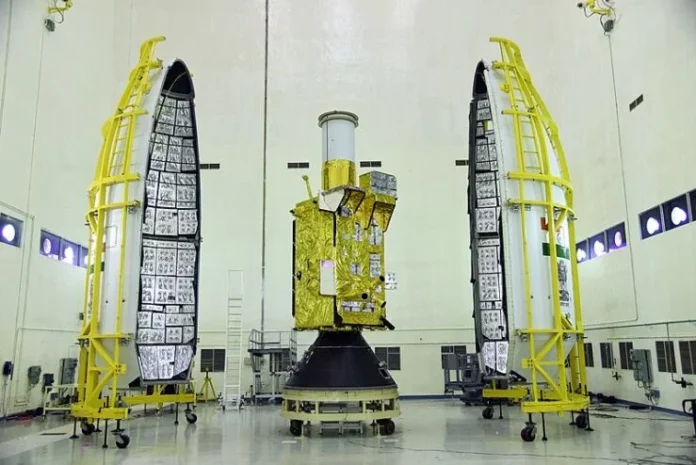Bengaluru: In a move to boost modernization and network-centric warfare and communications programme, the Indian Navy is looking to acquire a dedicated earth imaging satellite — Geo Imaging Satellite-2 (GISAT-2) — this fiscal. Once operational, the satellite is expected to enhance the navy’s operational capabilities in the Indian Ocean region, which is strategically and geopolitically important, especially in the backdrop of increasing Chinese presence.
The GISAT-2, is among 21 planned procurements, including some long-term acquisitions according to reports. The capability development and modernisation of the navy is being undertaken in accordance with the long-term plans being put in place for the next decade.
“The navy has been allotted Rs 45,250 crore for modernisation under budget estimates for 2022-23. Considering a 10% year-on-year growth, it is likely to be allotted more than Rs 2.7-lakh-crore for modernisation by 2026-27. The present total committed liabilities of the navy is Rs 1.20-lakh-crore and modernisation schemes for more than Rs 1.9-lakh-crore and Rs 2.5-lakh-crore (under Part A and B of the annual acquisition plan) are being progressed for contract conclusion over the next five years,” according to the Defence Ministry.
Aside from GISAT-2, the navy will procure: Next generation missile vessels, fleet support ship (FSS), high and medium altitude long endurance remotely piloted aircraft systems, multi-role carrier borne fighters, indigenous aircraft carrier-2; next generation fast attack craft; next generation corvettes, destroyers, fast interceptor craft and survey vessel; national hospital ship; electronic warfare system; extra-large unmanned underwater vehicle; anti-ship missiles (consolidated case for requirements up to 2030); medium range anti-ship missile system, simulator and missiles; MRSAM missiles etc.
While the MoD has listed GISAT-2 for procurement this fiscal, the timeline for development of the satellite and launch have not been firmed up yet. Among the armed forces, the Navy has been ahead when it comes to acquiring satellites.
The GISAT-2 will be designed to provide near real-time images of large areas of region of interest at frequent intervals, which will help the navy not only in surveillance but also operations planning. Operating from a geostationary orbit (GEO), the satellite will facilitate near real-time observations under cloud-free conditions too.
A 2+ ton class satellite, GISAT-2, like GISAT-1 will be configured around the modified I-2k satellite bus. ISRO had failed to put GISAT-1 into orbit in August last year after the GSLV-MK-II carrying it developed glitches in the cryogenic upper stage, rendering the mission a failure. The August 2021 mission was the space agency’s third attempt at launching the satellite — the earlier ones were scrubbed for different reasons.
According to sources, the payload specifications of GISAT-2 will differ from that of GISAT-1 and that ISRO is working on various payloads. “The first one (GISAT-1) was for civilian use, but GISAT-2 is for strategic purposes and the navy has very specific requirements which they (ISRO) need to meet,” official sources said. ISRO will be launching the satellite on the GSLV-MK-II after obtaining financial clearances for the same.





